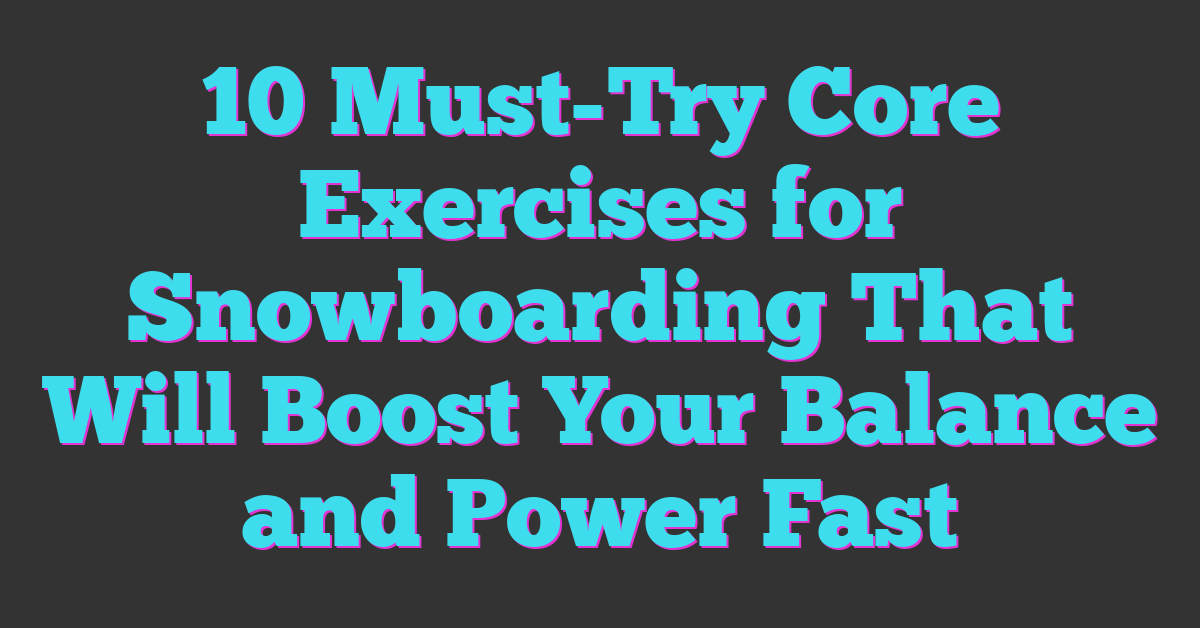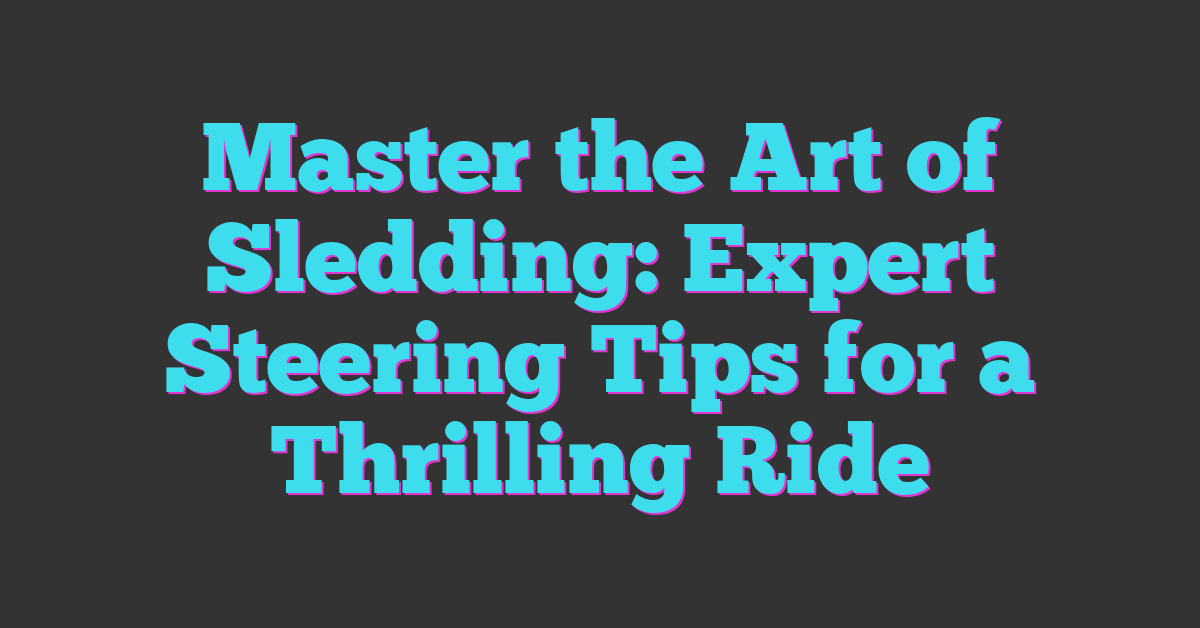Snowboarding demands more than just balance and style—it calls for a strong core to keep you steady on the slopes. Your core muscles act as the foundation for every twist, turn, and jump, helping you stay in control and avoid injuries.

If you want to boost your performance and enjoy longer days on the mountain, focusing on core exercises is a smart move. These workouts don’t just improve your strength—they enhance your stability and endurance, making every run smoother and more fun.
Whether you’re a beginner or a seasoned rider, building a solid core will take your snowboarding to the next level. Let’s dive into some key exercises that’ll have you shredding with confidence all season long.
Importance of Core Strength for Snowboarding
Core strength plays a crucial role in your snowboarding experience. Your ability to stay balanced and react quickly depends on how well your core muscles support your movements.
How Core Stability Enhances Performance
Core stability improves your control over the board. It helps you maintain proper posture during turns, jumps, and landings. Strong core muscles allow your body to react faster to changing terrain and conditions. It boosts your endurance, so you can ride longer without feeling fatigued. You’ll notice smoother, more precise movements that make every run more enjoyable.
Preventing Injuries Through Core Training
Core training protects you against common snowboarding injuries. It strengthens the muscles around your spine and pelvis, reducing the risk of strains and sprains. A solid core also provides better shock absorption during falls or hard landings. Developing core strength decreases the chance of lower back pain, a frequent complaint among snowboarders. Staying injury-free means more time on the slopes doing what you love.
Top Core Exercises for Snowboarding
Building a powerful core lets you dominate the slopes with greater control and confidence. These targeted exercises keep your midsection strong and ready for every twist, turn, and landing.
Plank Variations
Hold a standard plank on your forearms for 30 to 60 seconds to build full-core endurance. Add side planks to target obliques, holding each side for 30 seconds. Try plank with shoulder taps to challenge stability while keeping your hips steady—a key skill for balancing on uneven terrain.
Russian Twists
Sit on the floor with knees bent and feet slightly lifted. Twist your torso side to side, tapping the floor with your hands. Perform 3 sets of 20 twists. This rotation strengthens your obliques, essential for carving turns and quick directional changes when snowboarding.
Bicycle Crunches
Lie on your back and alternate bringing opposite elbow to knee in a cycling motion. Complete 3 sets of 15 to 20 reps per side. Bicycle crunches combine abdominal and rotational work, helping you maintain control during spins and jumps.
Leg Raises
Lie flat with legs extended and slowly lift them to 90 degrees. Lower back down without touching the floor. Perform 3 sets of 15 reps. Leg raises target lower abs, supporting hip flexors that are crucial for controlling your snowboard stance.
Medicine Ball Throws
Stand with a medicine ball and rotate your torso to throw the ball against a wall or to a partner. Do 3 sets of 10 throws per side. This explosive movement trains your core to generate power during turns and enhances your reaction time on the slopes.
Incorporating Core Exercises into Your Training Routine
Building a strong core demands consistency and smart training choices. You can maximize your snowboarding performance and prevent injuries by fitting core workouts effectively into your regular routine.
Frequency and Duration
Aim for core sessions 3 times a week, allowing at least one day of rest between workouts to promote muscle recovery. Each session lasts about 20 to 30 minutes, focusing on quality over quantity. Incorporate a mix of static holds, like planks, and dynamic moves, such as Russian twists, to engage all core muscles fully. Gradually increase exercise intensity or duration every few weeks to keep your core adapting and growing stronger.
Combining Core Work with Cardio and Flexibility Training
Pair core exercises with cardio workouts like cycling or running, which boost endurance and prepare your body for long days on the mountain. Follow core and cardio sessions with flexibility routines, including stretching or yoga, to maintain mobility and reduce muscle tightness. This combination enhances balance, agility, and responsiveness on your board while lowering your injury risk. Alternating these training types ensures your fitness plan supports every aspect of snowboarding.
Tips for Maximizing Core Workout Benefits
You get the most from your core workouts by focusing on proper form and adjusting challenges as you improve. These tips help build strength efficiently and reduce injury risk, so your snowboarding skills keep progressing.
Proper Form and Technique
Maintain a neutral spine and engage your core muscles throughout each exercise to protect your back. Start every movement slowly to master control before increasing speed or reps. Keep your breathing steady and avoid holding your breath during sets. For example, when doing planks, keep hips level and shoulders stacked over elbows. This precision builds strength exactly where snowboarding demands it, improving your balance and posture on the board.
Progression and Challenge Adjustment
Increase difficulty by adding reps, sets, or resistance once basic exercises feel easy. Switch up movements to target core muscles from different angles, like rotating medicine ball throws or side plank leg lifts. Incorporate unstable surfaces such as balance pads or BOSU balls to mimic snowboarding’s dynamic environment. Track your progress regularly and tweak workouts accordingly to keep challenging your muscles and enhance endurance, power, and control on every run.
Conclusion
Building a strong core isn’t just about fitness—it’s about unlocking your full potential on the snowboard. When your core is solid, you’ll feel more balanced, agile, and ready to tackle any terrain with confidence.
Stick with your core routine, listen to your body, and watch how your control and endurance improve. The more you commit, the more fun and injury-free your time on the slopes will be. Keep pushing yourself, and enjoy every ride!
















